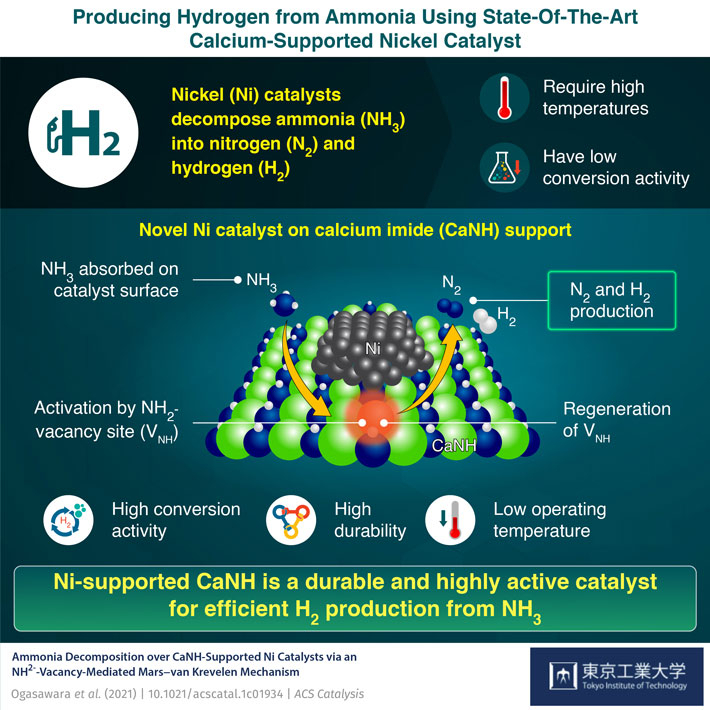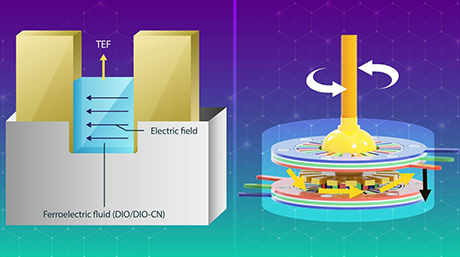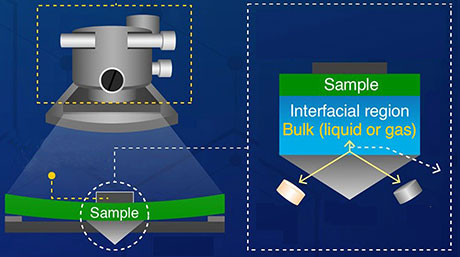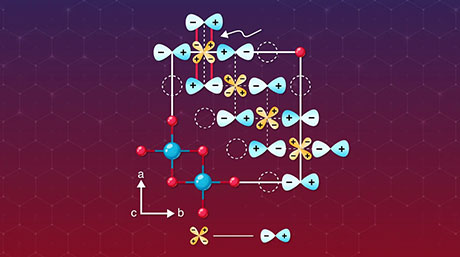Materials Science and Engineering News
Breaking Ammonia: A New Catalyst to Generate Hydrogen from Ammonia at Low Temperatures
Ammonia, a carbon-free resource can be split into nitrogen and hydrogen gas with the help of metal catalysts like Nickel (Ni). However, these reactions often require very high operating temperatures. Now scientists from Tokyo Institute of Technology (Tokyo Tech) have developed a highly efficient calcium imide (CaNH)-supported Ni catalyst that can decompose ammonia at temperatures 100°C lower than what conventional Ni catalysts require. This promising new catalyst can get us closer to sustainably producing hydrogen fuel.

The current global climate emergency and our rapidly receding energy resources have people looking out for cleaner alternatives like hydrogen fuel. When burnt in the presence of oxygen, hydrogen gas generates huge amounts of energy but none of the harmful greenhouse gases, unlike fossil fuels. Unfortunately, most of the hydrogen fuel produced today comes from natural gas or fossil fuels, which ultimately increases its carbon footprint.
Ammonia (NH3), a carbon-neutral hydrogen compound has recently garnered a lot of attention owing to its high energy density and high hydrogen storage capacity. It can be decomposed to release nitrogen and hydrogen gases. Ammonia can be easily liquified, stored, and transported, and converted into hydrogen fuel when required. However, the production of hydrogen from ammonia is a slow reaction with very high energy demands. To speed up production, metal catalysts are often used, which help reduce the overall energy consumption during hydrogen production as well.
Recent studies have found that Nickel (Ni) is a promising catalyst for splitting ammonia. Ammonia gets adsorbed on the surface of Ni catalysts, following which the bonds between nitrogen and hydrogen in ammonia are broken and they are released as individual gases. However, obtaining a good conversion of ammonia using a Ni catalyst often involves very high operating temperatures.
In a recent study published in ACS Catalysis![]() , a team of researchers from Tokyo Tech led by Associate Professor Masaaki Kitano described a solution to overcome the issues faced by Ni-based catalysts. They developed a state-of-the-art calcium imide (CaNH)-supported Ni-catalyst that can achieve good ammonia conversion at lower operating temperatures. Dr. Kitano explains, "Our aim was to develop a highly active catalyst that would be energy efficient. Our addition of the metal imide to the catalyst system not only improved its catalytic activity but also helped us unravel the elusive working mechanism of such systems."
, a team of researchers from Tokyo Tech led by Associate Professor Masaaki Kitano described a solution to overcome the issues faced by Ni-based catalysts. They developed a state-of-the-art calcium imide (CaNH)-supported Ni-catalyst that can achieve good ammonia conversion at lower operating temperatures. Dr. Kitano explains, "Our aim was to develop a highly active catalyst that would be energy efficient. Our addition of the metal imide to the catalyst system not only improved its catalytic activity but also helped us unravel the elusive working mechanism of such systems."
The team discovered that the presence of CaNH resulted in the formation of NH2- vacancies (VNH) on the surface of the catalyst. These active species resulted in the improved catalytic performance of the Ni/CaNH at reaction temperatures that were 100°C lower than those necessary for the functioning of Ni-based catalysts. The researchers also developed computational models and conducted isotope-labeling to understand what is happening on the catalyst surface. The calculations proposed a Mars−van Krevelen mechanism that involved adsorption of ammonia onto the CaNH surface, its activation at the NH2- vacancy sites, formation of nitrogen and hydrogen gas, and finally regeneration of vacancy sites promoted by Ni nanoparticles.
The highly active and durable Ni/CaNH catalyst can be successfully deployed for the generation of hydrogen gas from ammonia. Also, the insight into the mechanism of catalysis provided by this study can be utilized to develop a new generation of catalysts. "As the whole world is working together to build a sustainable future, our research is aimed at resolving the hiccups faced on our way to a cleaner hydrogen fuel economy," concludes Dr. Kitano.
This is a ray of hope for the world's low carbon-emission mission!
- Reference
| Authors : | Kiya Ogasawara1, Takuya Nakao1, Kazuhisa Kishida1, Tian-Nan Ye1, Yangfan Lu1, Hitoshi Abe2, Yasuhiro Niwa2, Masato Sasase1, Masaaki Kitano*1, and Hideo Hosono*1 |
|---|---|
| Title of original paper : | Ammonia Decomposition over CaNH-Supported Ni Catalysts via an NH2–-Vacancy-Mediated Mars–van Krevelen Mechanism |
| Journal : | ACS Catalysis |
| DOI : | 10.1021/acscatal.1c01934 |
| Affiliations : |
1 Materials Research Center for Elemental Strategy, Tokyo Institute of Technology, Japan 2 Institute of Materials Structure Science, High Energy Accelerator Research Organization, Japan |
* Corresponding authors' emails: kitano.m.aa@m.titech.ac.jp, hosono@mces.titech.ac.jp
- Turning the Heat Down: Catalyzing Ammonia Formation at Lower Temperatures with Ruthenium | Tokyo Tech News
- Multiple Semiconductor Type Switching To Boost Thermoelectric Conversion of Waste Heat | Tokyo Tech News
- Having it Both Ways: A Combined Strategy in Catalyst Design for Suzuki Cross-Couplings | Tokyo Tech News
- Shedding Light on the Development of Efficient Blue-Emitting Semiconductors | Tokyo Tech News
- Breakthrough ammonia synthesis that does not need precious metals | Tokyo Tech News
- Filling the Void in Ammonia Synthesis: The Role of Nitrogen Vacancies in Catalysts | Tokyo Tech News
- Running on Empty: New Affordable Catalyst Relies on Nitrogen Vacancies to Produce Ammonia | Tokyo Tech News
- An 'exceptionally stable' single-atom catalyst: Single platinum atoms stabilized in C12A7 crystals | Tokyo Tech News
- Spirit of new materials creation | Research Stories | Research
- Hideo Hosono - Manipulating electrons well to elicit the potential of materials, Part 1 | Research Stories | Research
- Hideo Hosono - Manipulating electrons well to elicit the potential of materials, Part 2 | Research Stories | Research
- Shinsuke Inagi and Masaaki Kitano are FY2018 STAR grant recipients | Tokyo Tech News
- Hideo Hosono wins Von Hippel Award from Materials Research Society | Tokyo Tech News
- Kitano Lab. (Japanese)
- Researcher Profile | Tokyo Tech STAR Search - Masaaki Kitano
- Researcher Profile | Tokyo Tech STAR Search - Hideo Hosono
- Materials Research Center for Element Strategy (MCES)
- Materials Science and Engineering Graduate Major|Education|Department of Materials Science and Engineering, School of Materials and Chemical Technology
- Latest Research News
School of Materials and Chemical Technology
—Encompassing the Disciplines of Science—
Information on School of Materials and Chemical Technology inaugurated in April 2016
Further Information
Associate Professor Masaaki Kitano
Materials Research Center for Element Strategy,
Tokyo Institute of Technology






